Brisbane snake catcher: A day in the life of ‘snake man’ Stuart McKenzie
They have become common not merely in the outback but in backyard suburban homes and it takes a pro to catch them. Snake man Stuart McKenzie shows us how its done.
QWeekend
Don't miss out on the headlines from QWeekend. Followed categories will be added to My News.
THE SNAKE appeared at about 11am creating chaos in Athena Law’s household and by 1.30pm we’re all clustered outside the laundry standing in respectful silence as “Snake Man’’ Stuart McKenzie, exuding a calm command, gazes at a cupboard with the meditative air of a bomb disposal expert.
“Can I move that cupboard?’’ he finally asks Athena.
Athena is in the real estate industry. Her house sits on a sprawling block at Rosemount outside Nambour and has a backyard pool from which you can gaze across a peaceful green valley towards the Blackall Ranges, all the way up to the town of Montville where husband Mathew is head chef at swank restaurant Secrets on the Lake.
This young, attractive and prosperous couple is living the Queensland dream with son Noah in their magnificent brick home in one of the most desirable locations in the state.
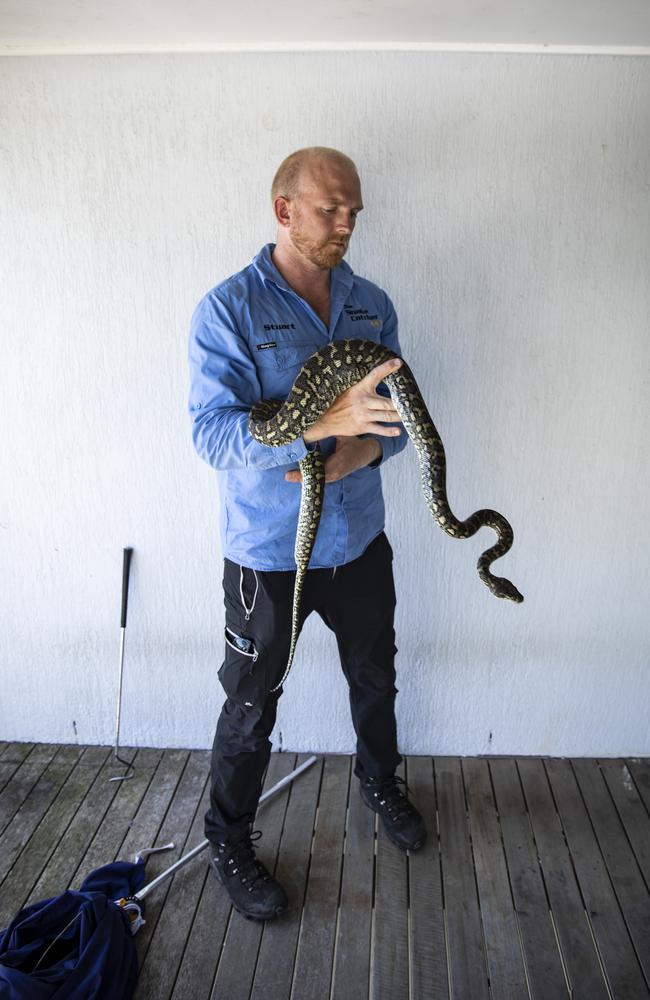
Yet on this sunny February morning, with the air washed clean by recent rains and the fields luxuriant with thick green grass, one of the world’s ancient emblems of evil has slithered its way into their walled garden of peace and tranquillity, and all notions of a calm, ordered existence are up-ended.
“Can you move that cupboard?” echoes Athena with an exaggerated air of calm.
“Yes, of course you can move the cupboard!
“Demolish it, blow it up, we’re moving out!’’
Athena is being deliberately theatrical, and it’s a magnificent performance.
The anxiety is mitigated with much laughter and quipping between her and Mathew and her mum (who first saw the snake in the laundry) and dad.
The entire family, though clearly troubled and deeply concerned by this reptilian interloper, is simultaneously enjoying the thrill of adventure in finding the snake and the frisson of danger accompanying it. The only family member who can’t find anything amusing in this situation is Jack the cat.
Jack has abandoned the laundry over which he normally exerts a powerful territorial control and is hiding under a coffee table on the patio, grimly meeting my gaze with unblinking eyes, which subtly appear to swivel to the laundry, suggesting there is a mortal terror lurking within.
McKenzie, armed with various poles with hooks on the end and a large blue bag that looks vaguely, at least to those uninitiated into the snake trade, like a butterfly net, begins to show visible signs of frustration at the snake’s failure to materialise.
“They saw it this morning, definitely, and they saw it again about 10 minutes before I arrived,’’ he says.
“But the problem is a snake in a place like a laundry can squeeze through the smallest space, and I mean so small you can’t possibly imagine they could get through it, and just escape outside or, worse, move into another part of the house.’’
“I would say it is the most frustrating part of the job. It happens maybe 20 per cent of the time for me and I hate it because your job is to solve a problem for your client.’’
McKenzie moves the cupboard with professional purpose, but less vigour than Athena had proposed. He runs his hand across walls to detect potential exit points, leaves the laundry to prowl the lounge room, then returns to the laundry, gets down on his hands and knees, and lifts up the Fisher and Paykel washing machine to peer underneath with the aid of a torch.
To me, hovering nervously at the laundry entrance, that manoeuvre speaks of an unselfconscious, manly, physical courage you seldom see anymore, and I suddenly feel a little envious. This snake could be a harmless tree snake or it could be an eastern brown, which has the capacity to kill McKenzie, quick as look at him.
“Ever get scared?’’ I ask hopefully, and he gazes upward at me balefully for a few seconds, as if silently critiquing my interviewing skills and marking them down.
“Not so much scared,’’ he says finally. “It’s more a case of never letting your guard down.’’
The snake won’t reveal itself, McKenzie’s phone which has gone off three times in the past 30 minutes, jingles into life again delivering news of a python up a Marcoola pandanus tree. McKenzie leaves his contact details with Athena, hops into his van with “The Snake Catcher 24/7’’ signs and speeds off to his next assignment with me following close behind, the theme from Ghostbusters inexplicably sound tracking through my head.
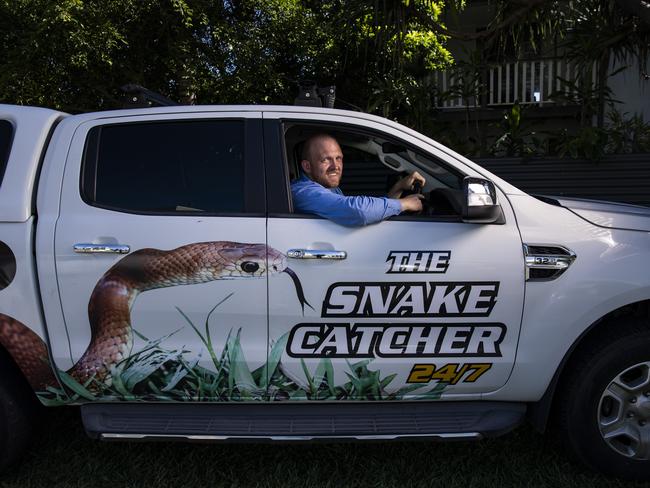
“If there’s something strange, in your neighbourhood, who ya gonna call?’’
Ghostbusters, obviously, but if the “something strange’’ slithers and has scales it might be best to call McKenzie, a man with one of the most curious jobs in this state. For $125 plus GST as his call-out price, McKenzie will solve your snake problems and can point to a solid track record of successful capture and relocation spanning more than half a decade.
Aged just 30, he studied zoology and marine biology at James Cook University in Townsville and by 2013 was working at the Irwins’ famous Australia Zoo on the Sunshine Coast, taking an interest in reptiles and obtaining his snake handler’s licence. McKenzie demonstrates little of that “show and tell’’ schoolboy fascination with snakes. As an actual schoolboy in Wagga Wagga he kept well away from them but developed an interest in their cousin, the lizard.
“Martha,’’ a shingleback lizard he adopted at age 10, is still with him along with his wife Megan, who joined him later.
All three are living in Buderim as McKenzie pursues what is clearly a thriving and highly lucrative small business.
Because snakes are booming.
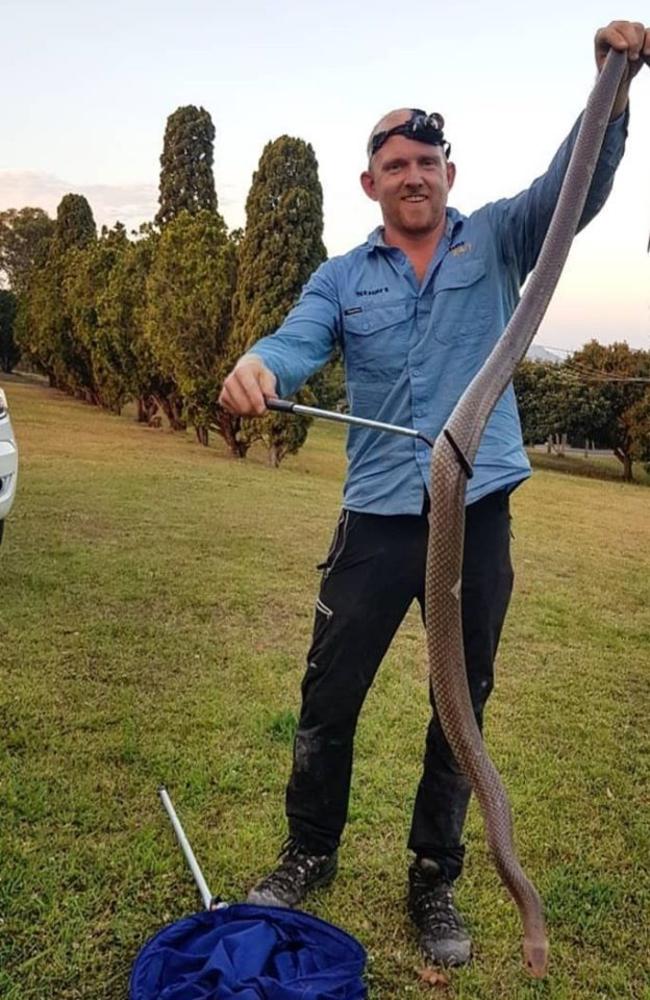
For pretty much two centuries since European arrival most Australians had the view that the only good snake was a dead snake. As settlers cleared land and developed farming and grazing it was a case of us against nature. The plot of Henry Lawson’s most famous short story, The Drover’s Wife, centres on a lone woman’s struggle with the natural world as she waits all night with her dog to kill a snake, which threatens her and her four kids while her husband is away droving. Farmers shot snakes on sight, suburbanites attacked them with shovels and motorists swerved into opposite lanes to run over them.
By the 1960s, just as Rachel Carson was igniting the global environmental movement with her 1962 book Silent Spring, the future of snakes looked more akin to that of the lion – a curiosity largely removed from human habitat and locked up in a zoo.
But people around the globe decided to warmly embrace nature rather than fight it, and subsequently Australian governments have done quite the opposite to what St Patrick did in allegedly banishing snakes from Ireland.
Instead of having them all killed or driving them out of the continent, governments since the 1970s have been legislating to ensure snakes not only remain here, but thrive.
Numerous laws have been passed to protect the natural world, including 40 principal pieces of Commonwealth environmental legislation, one of the more significant being the National Parks and Wildlife Conservation Act 1975.
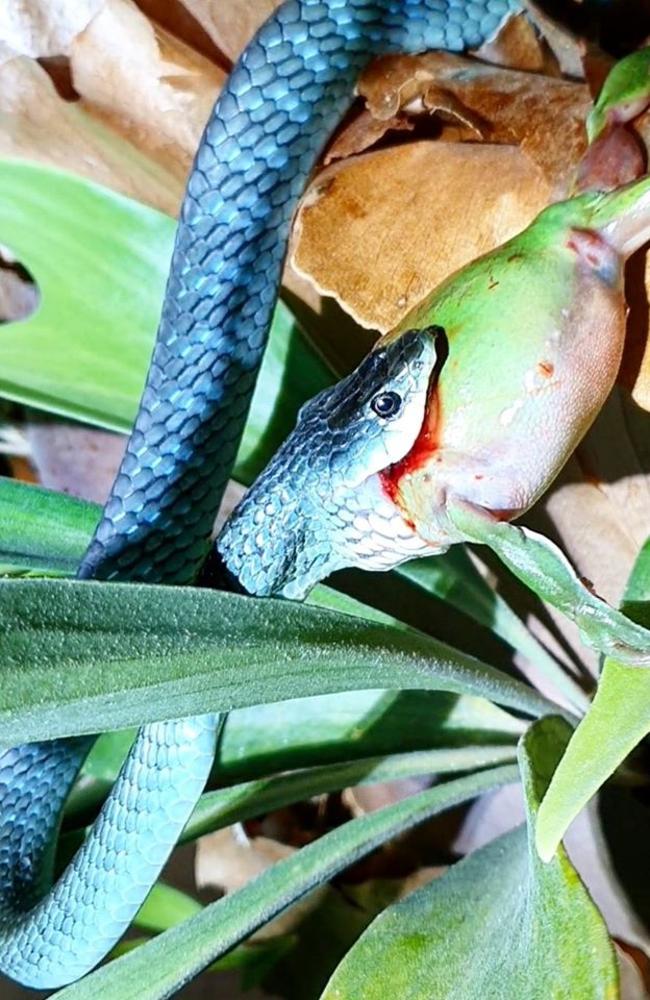
Today, all native Australian snakes are protected on a continent which hosts about 140 species of land snake. Around 12 Australian species are considered deadly, including the western brown and the taipan, while those of us who live in the state’s southeast should be wary mostly of the eastern tiger, the death adder, the eastern brown and the red-bellied black.
The Queensland Ambulance Service keeps meticulous records on calls out to snake bite-related incidents and they show that, on a rough average, a Queenslander will call an ambulance twice a day for a snake-related incident. By mid-February this year alone there had been 180 calls while across the entire year of 2019 there were 715 and, in 2018, a further 814.
It might be strangely counterintuitive to some, but the likelihood of being bitten by a snake while you are out west or in the far north Queensland bush is far less likely than if you were in the metropolitan southeast. The reasons, as the QAB quickly points out, are not so much to do with snake populations as people populations – there are vastly more people in the metropolitan southeast to encounter a snake, and snakes have adapted well to city life. Last year, the city of Brisbane (Metro North and Metro South) received a total of 157 call-outs while the central west received just four. The Sunshine Coast always seems to feature heavily with the region topping the list in 2018 with 100 call-outs. Yet, while snakes are plentiful, fatality rates have clearly fallen.
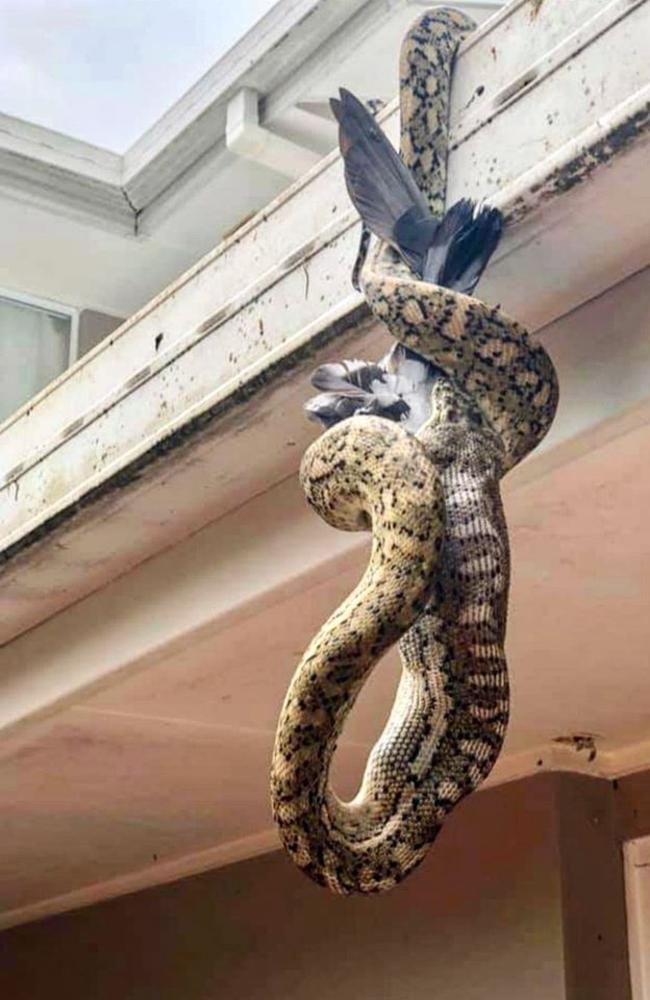
In January, Darling Downs man Roger Taylor died about a week after he was bitten multiple times by a brown snake on his Vale View property near Toowoomba. But deaths like this are unusual. The Medical Journal of Australia suggests the fatality rate is now down to one to two people a year, which is considerably less than 100 years ago when (although statistics are a rubbery) fatalities appear to have been in a range of somewhere between 13 and 20 deaths a year.
While human beings should have a respect for snakes and give them a wide berth, we can often survive a close encounter because we have not only antivenene but intelligence on our side.
Our pets often only have the antivenene.
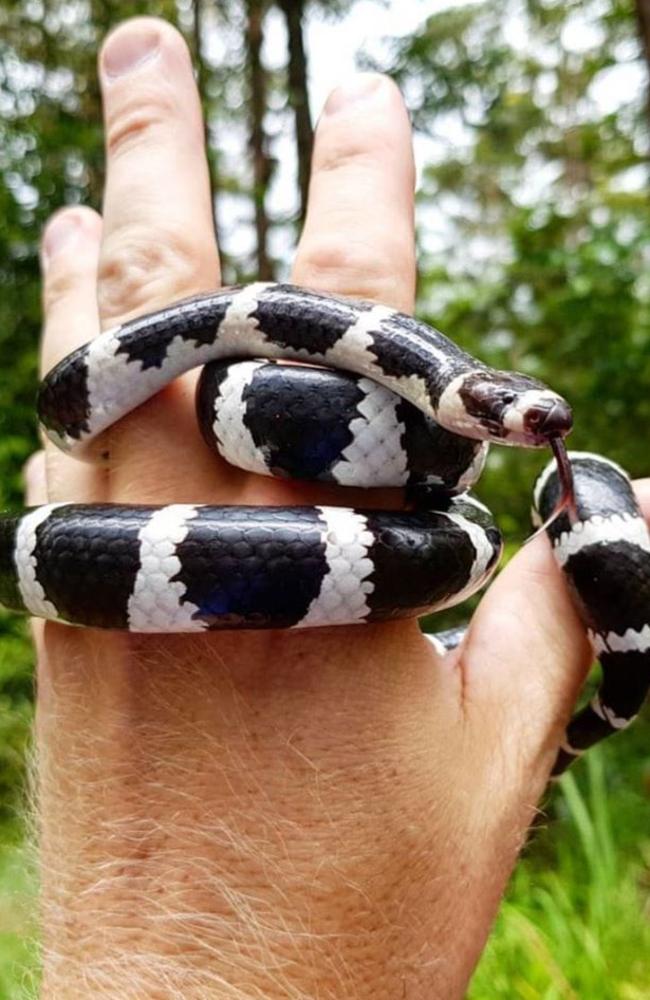
Jack the cat, cowering under the coffee table at the Laws’ residence in Rosemount, was no fool, but his fellow cats are not always so circumspect when it comes to snakes.
Associate Professor Rachel Allavena from the School of Veterinary Science at The University of Queensland says we probably only see the tip of the iceberg at suburban veterinary clinics where two or three pets are brought in every week either dead, or dying from snake bites.
In Queensland it’s almost certainly the eastern brown that is responsible for most pet fatalities. One of the reasons pets are vulnerable to snake bite is that a dog or cat won’t always follow the example set by Jack.
While most human beings will stand stock still when confronted with a snake or beat a hasty retreat, a dog or a cat may not grasp that old maxim that “discretion is the better part of valour’’ and retire gracefully from snake combat.
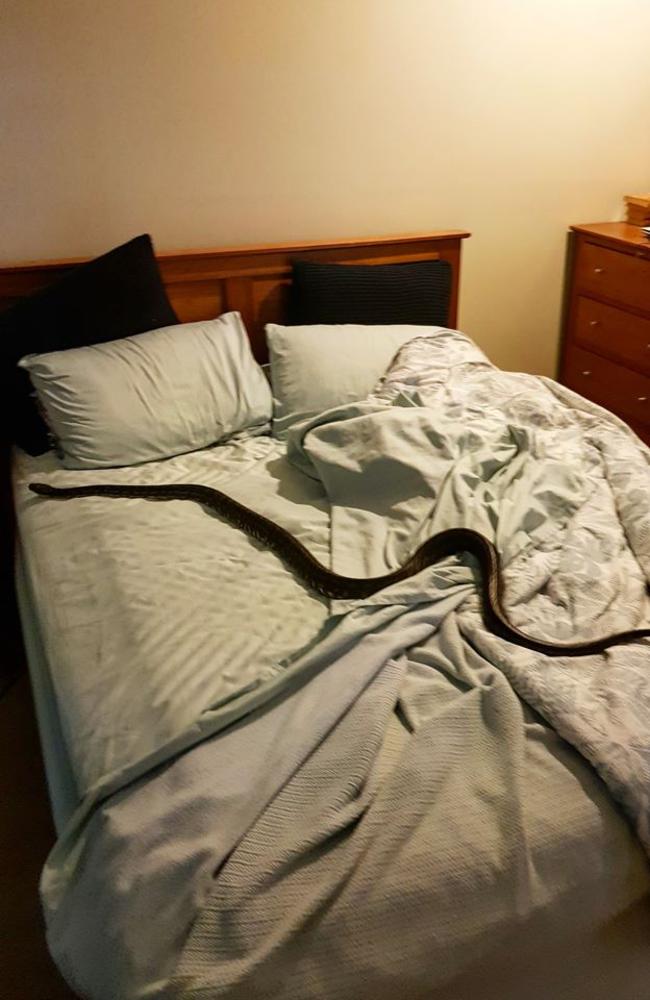
“A snake can determine how much venom they can inject with each bite so if they are engaged in a fight with, say, an aggressive dog, they might bite several times and then just decide in the end to unload a lethal load on their opponent to finish it off,’’ Allavena says.
It is true there are some dogs who develop a deserved reputation as a snake killer and cheat death. Allavena says she has heard of one very much alive dog in the southeast who has killed up to 10 snakes, mainly eastern browns.
But, for your average suburban dog, picking a fight with an eastern brown is like your average amateur boxer getting into the ring with Mike Tyson. The snake will more often than not kill the dog and the death is not easy – the venom clots the blood, the animal becomes paralysed, breathing becomes difficult and there are only a few moments to get to an antivenene before life ebbs away.
“What often happens is that people go to work leaving Fluffy the cat looking perfectly healthy and return to see them dead in the backyard,’’ Allavena says. “Sometimes people believe their pet has been deliberately poisoned, but often it can be a snake bite.’’
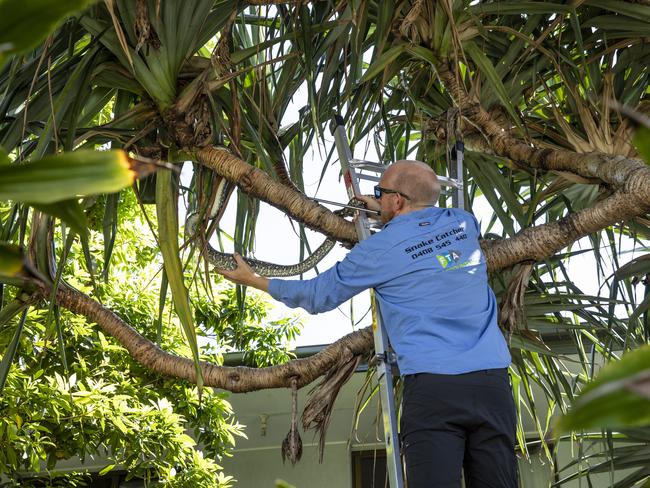
We get to Marcoola around 2.30pm and the situation is calm and controlled. Margaret Claydon is gazing pensively up at a pandanus tree in her front yard at a python nestled comfortably on top, a large bulge clearly visible in the snake’s belly. “It ate something, but at least it didn’t eat the cat,’’ says Claydon.
That cat, Boo, much like the wise Jack, knows what is going on and has quite sensibly retreated inside the house. Two dogs, blissfully unaware of a snake well outside their line of vision, bark and slobber enthusiastic greetings to the new arrivals. Claydon’s friend Helen Jarman had stopped by to look in on Claydon who has been feeling unwell, and Claydon told Jarman about the python. Jarman just happens to be McKenzie’s aunt and called up her nephew whom she clearly has a deep affection for, and who actually caught his first snake at her own house at nearby Pacific Paradise many years ago.
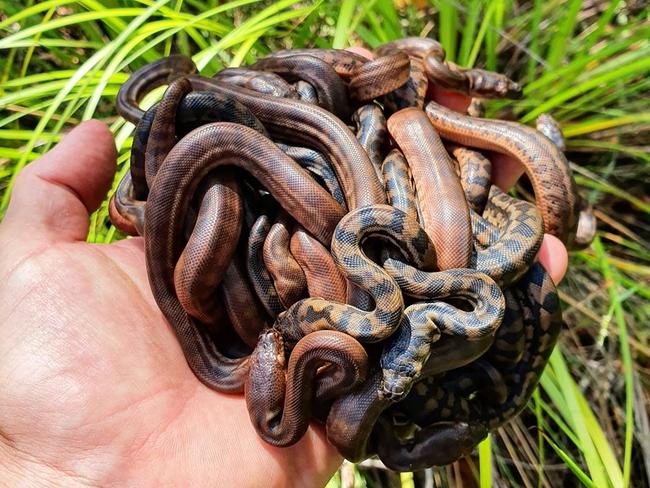
He sees this as a simple job. A long pole with a hook at the end materialises and he calmly coaxes the python, who shows no signs of any great agitation, out of the tree and into a bag.
McKenzie, clearly delighted with the chance to catch up with his “Aunty H’’ and pleased his snakeman duties have been fulfilled successfully, becomes a little more talkative on the back veranda as he poses for the photographer.
Snake catching might be a lucrative but it can be draining, he tells me. Most people are in a highly agitated state when they call and almost all insist that he arrive NOW! and not in a few hours or a day or two. The night after we meet he was called at 10pm, only to return home for some sleep and be woken at 2.30am.
One of his most pressing concerns is the snake’s identity and he will always ask a caller if they have a picture they can send over the phone so he can assess the risk to himself and clients. Snakes, even the most venomous, are not all that aggressive, he insists. The one category of snake he knows can be a little short tempered is the female coastal carpet python guarding her eggs.
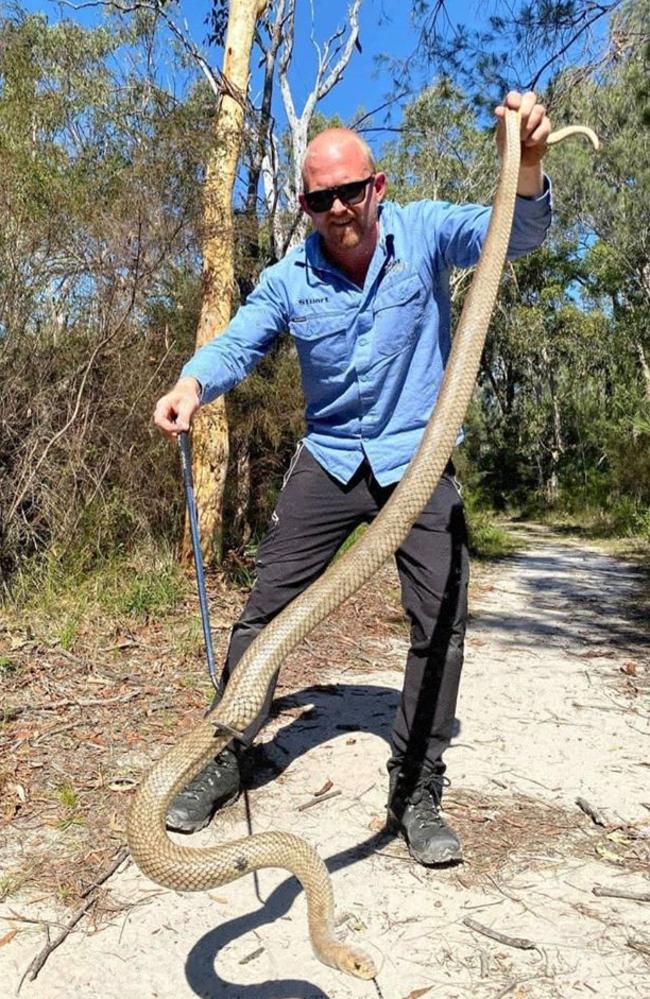
“The python will usually never be more than 2m away from her eggs,’’ he says.
“She might bask in the sun to get warmth but that warmth will immediately be transferred to the eggs as she goes back and resumes sitting on them. And she will do anything, and I mean anything, to keep you away from those eggs.’’
The python, though not lethally venomous, can still strike with a nasty bite. Late last year a four-year-old boy was attacked by 4.5m python at his Airlie Beach home. He was saved after his father pried the snake’s jaws open before killing it with a sledge hammer. The boy underwent surgery in hospital and recovered.
But cases like this are extremely rare and Sunshine Coast residents are unlikely to meet their end encased in an ever tightening python’s embrace and that knowledge – that snakes are largely harmless if you stay out of their way – seems to have permeated the collective consciousness of most southeast Queenslanders.
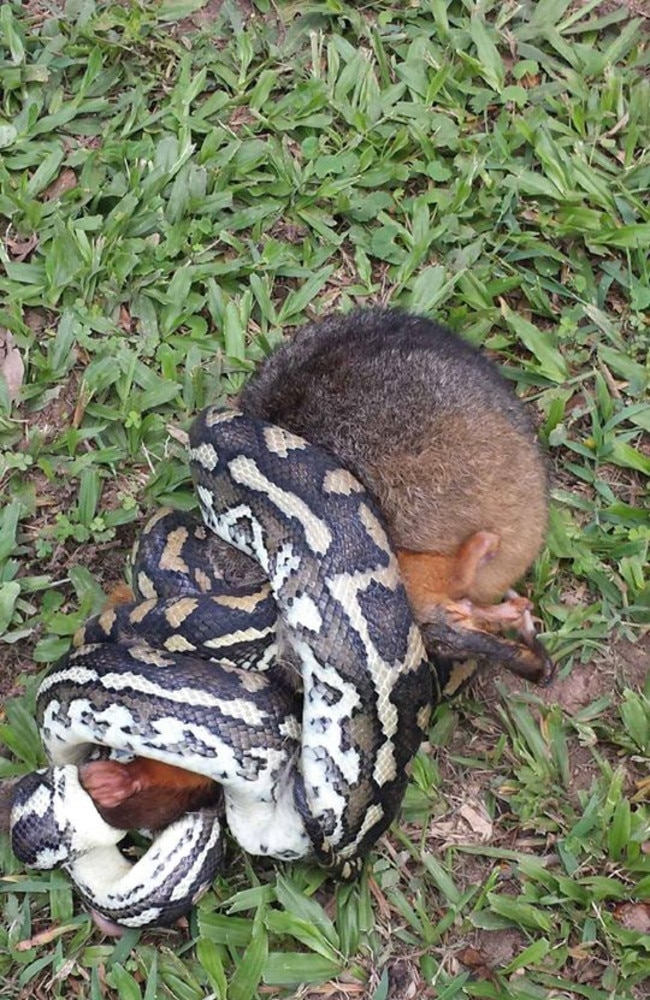
McKenzie rarely finds anyone who hates snakes and wants them killed, not even Athena who was determined to rid her family home of a potentially poisonous reptile which, as it turns out, was exactly what it was.
Nine days after McKenzie’s fruitless search of the Laws’ residence, the family discovered an eastern brown, more than a metre in length, nestled on a kitchen bench next to the toaster.
It was removed and relocated by McKenzie, as was the python briefly domiciled in Claydon’s pandanus which had almost certainly swallowed a small possum yet, as far as Claydon was concerned, was a quiet and well behaved guest.
“But in three weeks’ time it will be hungry again,’’ adds Claydon, eyes shifting uneasily to her faithful tabby Boo.
“It’s best to have snakes removed.’’
Boo doesn’t require the power of speech to convey his thoughts.
He’s in full agreement.


